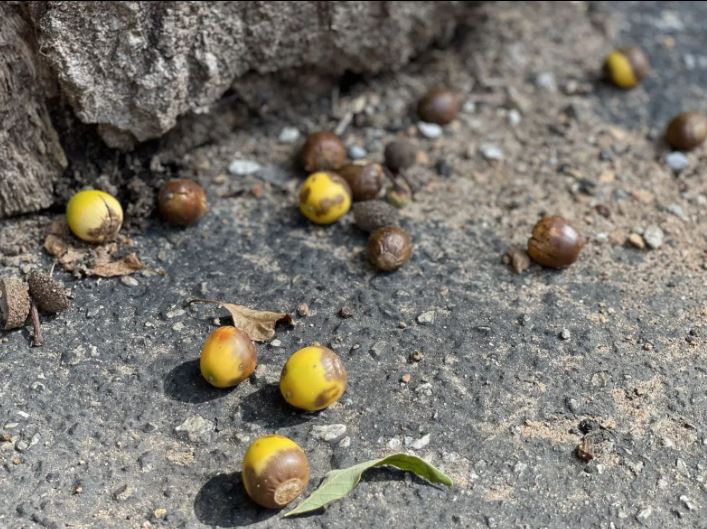Acorn abundance: Harbinger of a harsh winter or just part of WNC’s vibrant ecology?

According to weather folklore and the Farmer's Almanac
By Meghan Danahey
Click here for updates on this story
ASHEVILLE, North Carolina (WLOS) — As we make the transition to fall this weekend, many mountain trees will soon begin to change color and lose their leaves. Acorns, big and small, will fall to the forest floor.
It has been extra noisy at my house. The large chestnut oaks in our yard seem to be hurling acorns down onto the deck, driveway and rooftop. We didn’t experience anything like this last fall, so it got me thinking, does this mean a harsh winter?
According to weather folklore and the Farmer’s Almanac, an abundance of acorns can signal a severe winter.
Or could it mean something more? I started thinking a lot about acorns.
I went to Katie Greenberg, a research ecologist with the U.S. Forest Service. We talked about a decades-long study of acorn crop size here in Western North Carolina. It has since been discontinued as there are less labor-intensive ways to measure acorn production each year.
Over years and years of research, Katie says of the findings, “Acorn production is extremely variable, geographically and even amongst locations within a certain area and from tree to tree. You can have a really huge crop on one tree in your yard and not much on the other tree. It also can vary amongst species. So, you might have a chestnut oak in your yard that happens to be producing a lot this year, but the other species may not be, or the other individuals may not even be producing very much, or any at all.”
There are five main species of oak in our forests here: northern red, scarlet, black, chestnut and white.
Katie inherited the study when she joined the Forest Service here. She tells me they were very interested in acorn crops, mainly because they’re the main source for the regeneration of oak trees. Acorns are the seeds.” Another reason she says, “hunters are very interested in acorn crops because they can have an influence on the population size of species that are hunted like black bear and deer.”
“How many acorns are produced, if there’s patterns, differences amongst species, differences among individuals,” all of this is of interest to foresters, ecologists, wildlife biologists and even disease ecologists. When rodent and deer populations are higher, so is the tick population, which can increase the prevalence of Lyme Disease.
Crop size is critical for the wildlife that calls WNC home.
Katie says, “a lot of important game species: turkey, grouse, deer, bear, squirrels eat acorns and, of course, that’s important to hunters and to the population size of those game species. Acorns also feed, not the exact bottom of the food chain, but things like rodents: squirrels, mice and chipmunks. Those animals are prey to higher-level predators. That’s why acorns or oak trees are considered a keystone species in a sense. Keystone meaning they’re fundamental to the very base of the ecology of the ecosystem.”
Harsh winter? We shall see. It turns out, there are a lot of reasons to pay attention to that mighty little seed with a big impact here in WNC.
Please note: This content carries a strict local market embargo. If you share the same market as the contributor of this article, you may not use it on any platform.
